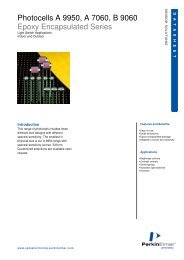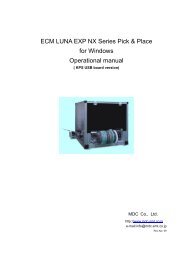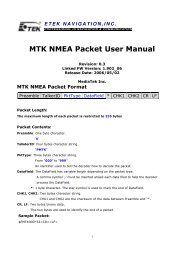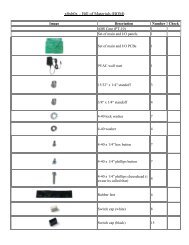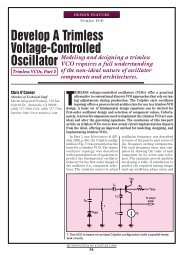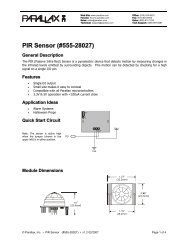Microstrip Patch Antennas for Broadband Indoor Wireless Systems ...
Microstrip Patch Antennas for Broadband Indoor Wireless Systems ...
Microstrip Patch Antennas for Broadband Indoor Wireless Systems ...
Create successful ePaper yourself
Turn your PDF publications into a flip-book with our unique Google optimized e-Paper software.
1.0 INTRODUCTION<br />
Currently there is a boom in the development of personal communication service (PCS)<br />
devices as they are now deeply integrated into society. The PCS arena covers everything<br />
from cellular phones that incorporate digital cameras and web browsing to <strong>Wireless</strong><br />
Local Area Networks (WLAN). Since they can all be linked together, their applications<br />
are no longer limited. It is now both possible and af<strong>for</strong>dable to surf the web from your<br />
laptop without any wire connectivity, while enjoying the rugby match on your television.<br />
A WLAN is a flexible data communication network used as an extension to, or an<br />
alternative <strong>for</strong>, a wired LAN in a building. Primarily they are used in industrial sectors<br />
where employees are on the move, in temporary locations or where cabling may hinder<br />
the installation of wired LAN. Increasingly more and more wireless LANs are being<br />
setup in home and or home office situations as the technology is becoming more<br />
af<strong>for</strong>dable. Industry giants are already predicting that 90% of all notebooks will contain<br />
integrated WLAN by 2008. With progress and expansion comes the need <strong>for</strong> faster<br />
technology and higher transfer rates. The ongoing wireless LAN standardization and<br />
Research & Development activities worldwide, which target transfer rates higher than<br />
100 Mbps, justify the fact that WLAN technology will play a key role in wireless data<br />
transmission. Cellular network operators have recognized this fact, and strive to exploit<br />
WLAN technology and integrate this technology into their cellular data networks.<br />
The increasing popularity of indoor wireless LAN capable of high-speed transfer rate is<br />
prompting the development of efficient broadband antennas. Due to increased usage in<br />
residential and office areas, these systems are required to be low profile, aesthetically<br />
pleasing and low cost as well as highly effective and efficient. <strong>Microstrip</strong> patch antennas<br />
are well suited <strong>for</strong> wireless LAN application systems due to their versatility,<br />
con<strong>for</strong>mability, low cost and low sensitivity to manufacturing tolerances. Conventionally<br />
patch antennas have showed a narrowband response, implicating low bit rate transfer.<br />
Recently importance has been placed upon creating patch antennas that show broadband<br />
properties, capable of high-speed data transfer. The aim of this project is to design<br />
efficient and reliable broadband patch antennas showing signs of directivity leading to<br />
adequate area coverage and sufficient bandwidth usage.<br />
The following sections of the report will introduce the basic requirements of antennas <strong>for</strong><br />
wireless LAN systems (section 2). Foundations <strong>for</strong> microstrip design (section 3) will<br />
provide the basic ideas and background research in<strong>for</strong>mation. Design methodology<br />
(section 4) will offer a summary of the work that had been carried out in phase I, phase II<br />
and phase III (section 5, 6 and 7). The issues encountered throughout the project and<br />
future recommendations are explained in section 8 and 9. Finally project conclusions are<br />
presented in section 10.<br />
1




